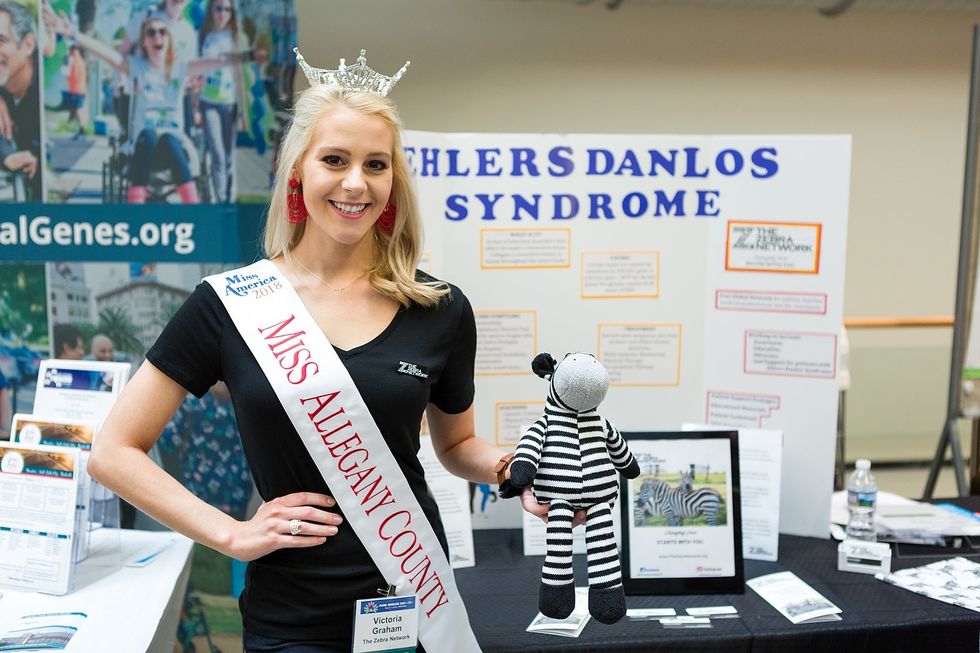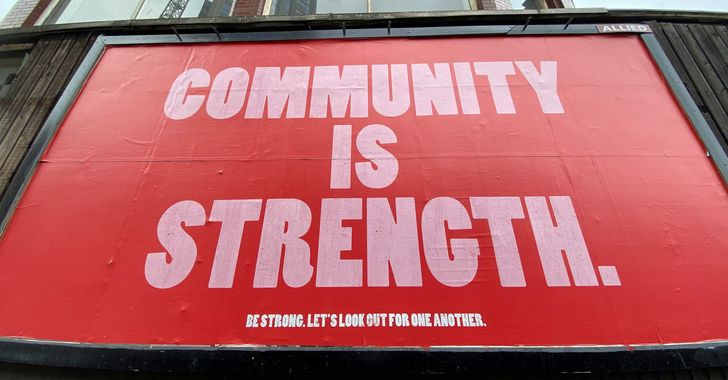If you keep up with celebrity gossip you may have heard of Ehlers Danlos Syndrome. Within the past year or so, several celebrities have opened up about their personal struggle and experience with this medical collection. These celebrities include actress and activist Jameela Jamil, "RuPaul's Drag Race" season 11 winner Yvie Oddly, actress Lena Dunham, and singer-songwriter Sia. But what even is Ehlers Danlos Syndrome and if celebrities have it then why is it never talked about? As someone who has Ehlers Danlos Syndrome, it was incredibly comforting to know that there are other people out there in the public eye who are like me.
However, there are still plenty of people who still have absolutely no idea that this medical condition even exists. The only way to bring awareness to this condition is to inform, advocate, and educate.
1. It's all about connective tissues
Ehlers Danlos Syndrome (EDS) is defined as "a group of disorders that affect the connective tissues supporting the skin, bone, blood vessels, and many other organs and tissues." This can result in a variety of symptoms including loose joints, fragile skin that is velvety and highly elastic, muscle pain and fatigue, and heart valve problems. EDS is a genetically inherited condition but can also be the result of spontaneous gene mutations.
2. There is more than one type of Ehlers Danlos Syndrome.
 Giphy
GiphyEhlers Danlos Syndrome is a broad term for a variety of disorders. According to the 2017 International Diagnostic Criteria there are 13 EDS subtypes and each subtype is unique and has specific criteria for diagnosis. The most common subtype is Hypermobile Ehlers Danlos Syndrome (hEDS) along with Vascular and Classic EDS. The remaining types are typically pretty rare and include Classical-like EDS, Cardiac-valvular EDS, Arthrochalasia EDS, Dermatosparaxis EDS, Kyphoscoliotic EDS, Brittle Cornea Syndrome. Spondlodysplastic EDS, Musculocontractual EDS, Myopathic EDS, and Peridontal EDS.
3. Ehlers Danlos is a rare condition
Ehlers Danlos Syndrome is classified as a rare condition by the National Organization for Rare Disorders. All subtypes combined can be found in approximately 1 in 5,000 people around the world. The hypermobile subtype affects anywhere from 1 in 5,000 to 1 in 20,000 people. The classical subtype most likely affects 1 in 20,000 to 40,000 people. Only about 60 cases of Kyphoscoliotic EDS have ever been reported.
4. People with Ehlers Danlos most likely have another chronic condition
Most people who have been diagnosed with Ehlers Danlos also have another chronic condition. For example, I have Ehlers Danlos Syndrome and I also have fibromyalgia (a chronic pain disorder). The presence of two or more chronic diseases in a patient is called a comorbidity. Common EDS comorbidities include Postural Orthostatic Tachycardia Syndrome (a condition that affects circulation and the autonomic nervous system), gut dysmotility (malfunctioning of the involuntary muscles that facilitate digestion.), anxiety, small fiber neuropathy (nerve damage resulting in chronic pain), various sleep disorders, and craniocervical instability (joint instability at the top of the neck).
5. Ehlers Danlos Syndrome can present itself in different ways
Ehlers Danlos Syndrome does not affect every person the same way. Some people are able to pace themselves, manage their pain well, and live fairly normal and healthy lives. Others may be bed or wheelchair-bound, unable to work, and rely on a caregiver. Ehlers Danlos Syndrome is a spectrum and everyone experiences the illness in a different way. Most people with EDS are able to mask their pain and go about their day. However, this does not mean that they are not "actually sick" or not suffering. They may just be really good at hiding it.
6. There is no cure for Ehlers Danlos Syndrome
 Giphy
GiphyEhlers Danlos Syndrome is considered to be a chronic illness. This means that it is persistent and does not go away. There is currently no cure for EDS. With that being said, the goal for those with EDS is to manage their symptoms. The most common treatments for Ehlers Danlos Syndrome include physical therapy to strengthen muscles and reduce the risk of dislocation and other injuries, wearing braces or splints, steroids, pain medications, surgery, and various lifestyle changes such as avoiding contact sports.
7. People who have Ehlers Danlos constantly suffer with chronic pain
People with EDS experience chronic pain. This pain can be widespread or in a specific limb or joint and ranges from joint, muscle, and nerve pain. Those with EDS also commonly experience chronic headaches or gastrointestinal pain. With that being said, most people with Ehlers Danlos regularly take medication to try and manage their chronic pain.
8. It can be incredibly hard to get a diagnosis
There is an old saying commonly taught in medical school that says "when you hear the sound of hooves, think horses, not zebras." This essentially means that if a patient is presenting symptoms for a large variety of medical conditions, it is more likely that is not something rare. Because EDS is considered to be a rare condition, doctors are often very hesitant to diagnose a patient with it. People with Ehlers Danlos Syndrome (myself included) are often misdiagnosed with medical conditions such as amplified pain syndrome, depression, chronic fatigue syndrome, insomnia, and hypochondriasis. There are only a handful of doctors in the country that specialize in diagnosing Ehlers Danlos. The most common way to diagnose Ehlers Danlos Syndrome is through genetic testing.
9. People with Ehlers Danlos Syndrome get hurt more often and heal slower
Until I was diagnosed with EDS I thought I was just clumsy because I was CONSTANTLY getting hurt. I usually made a trip to urgent care every other week for a jammed finger or a sprained ankle. I realized something was not right with my body when I dislocated my knee while getting my purse out of a car. Not only do those with EDS get injured more often but they also heal slower due to joint laxity.



 all stars lol GIF by Lifetime
all stars lol GIF by Lifetime two women talking while looking at laptop computerPhoto by
two women talking while looking at laptop computerPhoto by  shallow focus photography of two boys doing wacky facesPhoto by
shallow focus photography of two boys doing wacky facesPhoto by  happy birthday balloons with happy birthday textPhoto by
happy birthday balloons with happy birthday textPhoto by  itty-bitty living space." | The Genie shows Aladdin how… | Flickr
itty-bitty living space." | The Genie shows Aladdin how… | Flickr shallow focus photography of dog and catPhoto by
shallow focus photography of dog and catPhoto by  yellow Volkswagen van on roadPhoto by
yellow Volkswagen van on roadPhoto by  orange i have a crush on you neon light signagePhoto by
orange i have a crush on you neon light signagePhoto by  5 Tattoos Artist That Will Make You Want A Tattoo
5 Tattoos Artist That Will Make You Want A Tattoo woman biting pencil while sitting on chair in front of computer during daytimePhoto by
woman biting pencil while sitting on chair in front of computer during daytimePhoto by  a scrabbled wooden block spelling the word prizePhoto by
a scrabbled wooden block spelling the word prizePhoto by 
 StableDiffusion
StableDiffusion
 StableDiffusion
StableDiffusion
 StableDiffusion
StableDiffusion

 women sitting on rock near body of waterPhoto by
women sitting on rock near body of waterPhoto by 
 Photo by
Photo by  Photo by
Photo by  Photo by
Photo by  Photo by
Photo by  Photo by
Photo by  Photo by
Photo by  Photo by
Photo by  Photo by
Photo by  Photo by
Photo by  Photo by
Photo by 









